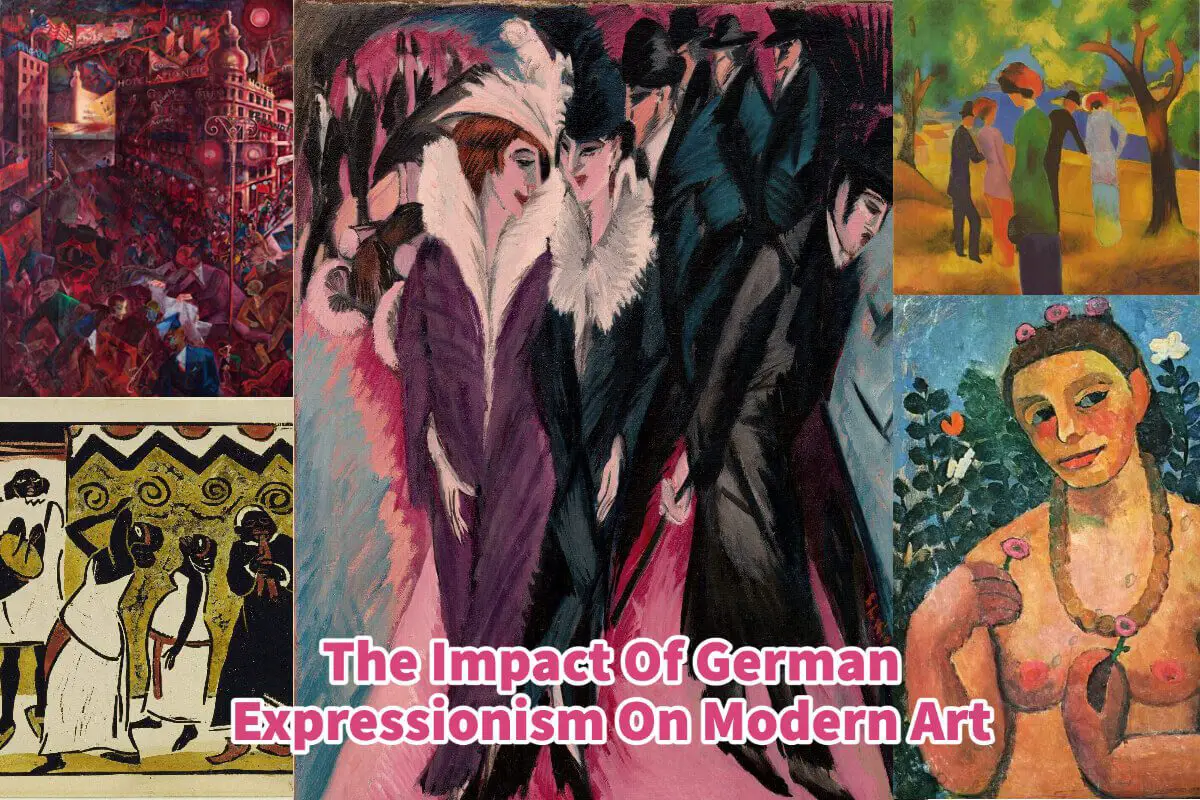A movement that many do not think about is the German Expressionism movement. German Expressionism is a movement that emerged in the early 20th century in Germany.
The impact of German Expressionism marked a departure from traditional art forms, which were prevalent then. The German Expressionism movement was characterized by its emotional intensity, bold colors, and distorted forms. At the time, the traditional art forms were considered overly academic and stale. Read on to discover how German Expressionism was a departure from these traditional forms and a bold and innovative movement that profoundly impacted the art world.
Table of Contents
- The Impact Of German Expressionism
- Ways German Expressionism Influenced Modern Art
- Our 9 Top Important German Expressionism Artists And Artwork
- Ernst Ludwig Kirchner – “Street, Berlin” (1913)
- Wassily Kandinsky – “Composition VII” (1913)
- Emil Nolde – “The Prophet” (1912)
- Franz Marc – “The Yellow Cow” (1911)
- Max Beckmann – “The Night” (1918-1919)
- George Grosz – “Metropolis” (1917)
- August Macke – “Lady in a Green Jacket” (1913)
- Paula Modersohn-Becker – “Self-Portrait with Amber Necklace” (1906)
- Max Pechstein – “Dancers” (1910)
- Frequently Asked Questions About German Expressionism Art
- Related Questions
The Impact Of German Expressionism
German Expressionism was a significant movement in Europe in the 20th Century. German Expressionism was an essential movement for several reasons:
German Expressionism Broke From Traditional Art Forms
German Expressionism represented a break from traditional art forms and marked a new era of experimentation and innovation. The movement saw with these changes the use of bold colors, emotionally charged art, and distorted forms.
German Expressionism Reflected Changed in Germany’s Political Climate
German Expressionism was a significant art movement because it reflected the social and political climate of the time. German Expressionism emerged during a period of great upheaval in Germany, and it was a response to this upheaval.
The years of German Expressionism spanned from roughly 1905 to 1933. This was before World War II, and new ideologies, particularly Nazism, started rising in Germany. Adolf Hitler came into power in Germany on January 30, 1933.
German Expressionism Impacted Modern Art
German Expressionism was a significant move because it profoundly impacted modern art. Many techniques and ideas developed during the German Expressionist movement have been carried forward into modern art. This movement has had a lasting influence on the art world.
The impact of German Expressionism on modern art has been profound. Many techniques and ideas developed during the German Expressionist movement have been carried forward into modern art.
For example, bold colors, emotional intensity, and distorted forms have become a hallmark of modern art. In addition, the German Expressionist movement influenced the development of abstraction. Many artists associated with the movement were interested in creating art divorced from objective reality.
Ways German Expressionism Influenced Modern Art
The impact of German Expressionism on modern art can be seen in several ways. Here are some of the most significant ways
German Expression’s Impact On Abstract Expressionism In The United States
One of the most obvious ways is through the work of the Abstract Expressionists, who emerged in the United States in the 1940s and 1950s. The German Expressionist movement heavily influenced these artists and drew on many of the same techniques and ideas.
For example, the work of artists like Jackson Pollock, Willem de Kooning, and Mark Rothko can be seen as a continuation of the German Expressionist tradition.



German Expressionism’s Impact on Film
Another way German Expressionism has impacted modern art is through its influence on film development. Many techniques and ideas developed during the German Expressionist movement were incorporated into early German cinema.
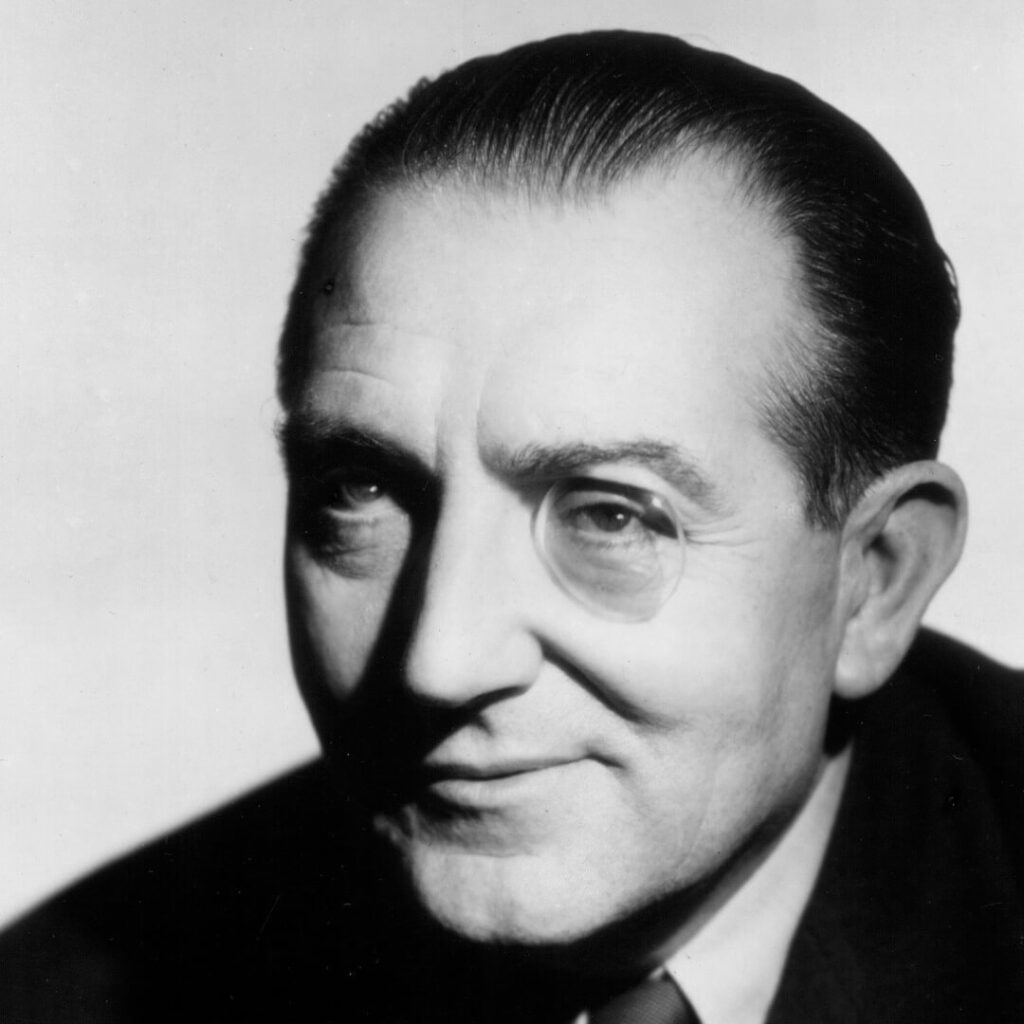
The films of directors like Fritz Lang and F.W. Murnau, for example, were heavily influenced by the German Expressionist movement. They helped shape the language of cinema for generations to come.

Our 9 Top Important German Expressionism Artists And Artwork
During this time, many artists were associated with the movement. The artists were characterized by their bold use of color, emotional intensity, and willingness to experiment with form and technique. Throughout the movement, several important works of art were produced.
Below are the top ten German Expressionist artists and their most significant works.
Ernst Ludwig Kirchner – “Street, Berlin” (1913)

Ernst Ludwig Kirchner was a founding member of the Die Brücke group, one of the most influential groups associated with German Expressionism. “Street, Berlin” is a significant work because it captures the energy and chaos of the city during this period of profound change.
Wassily Kandinsky – “Composition VII” (1913)

Although Wassily Kandinsky was not strictly speaking a German Expressionist, his work was closely associated with the movement. “Composition VII” is a significant work because it represents the culmination of Kandinsky’s efforts to create a purely abstract art form.
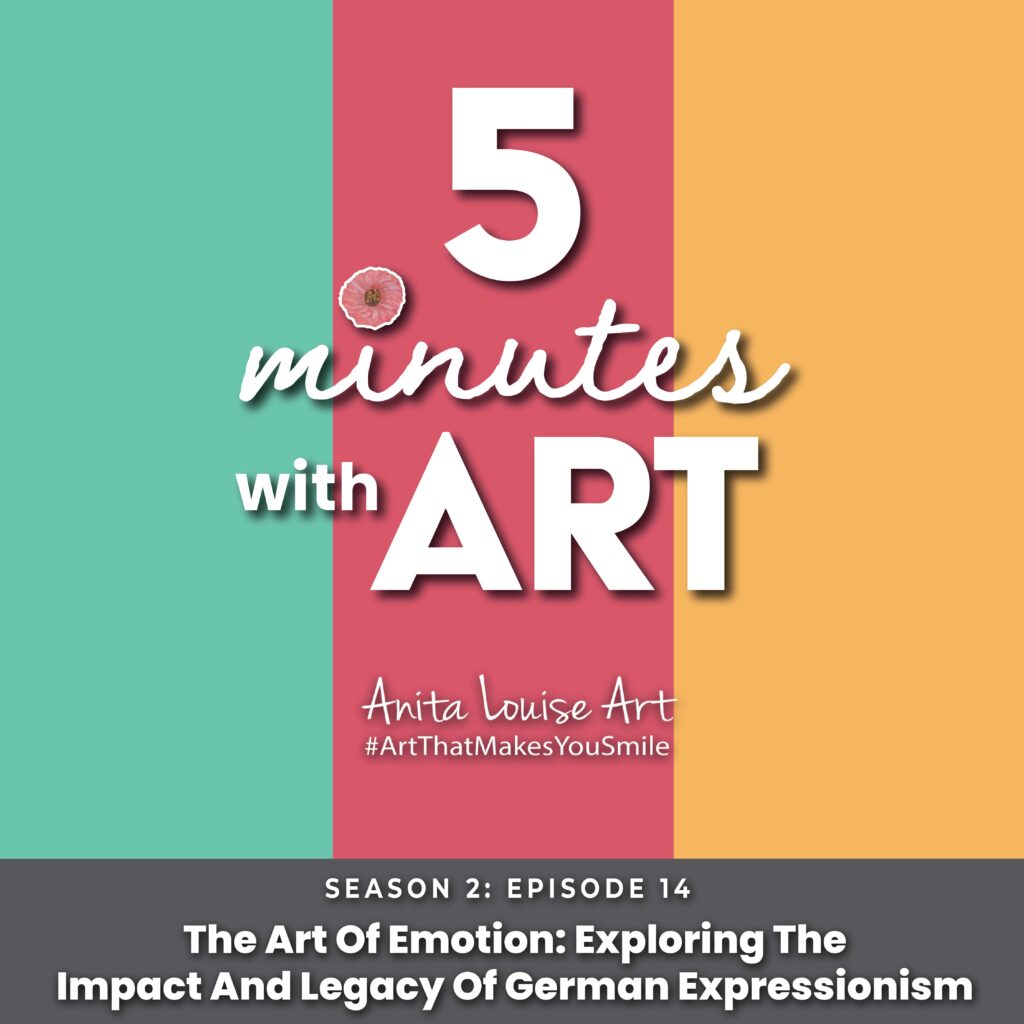
Listen To Our Podcast About The Art Of Emotion: Exploring The Impact And Legacy Of German Expressionism by clicking here.
Emil Nolde – “The Prophet” (1912)

Emil Nolde, the Prophet, shows the viewers his brilliance in using emotions even without color. The eyes of the prophet are almost lifeless and hollow, along with sunken cheeks. There is a kind of intense sadness and emotion.
Franz Marc – “The Yellow Cow” (1911)
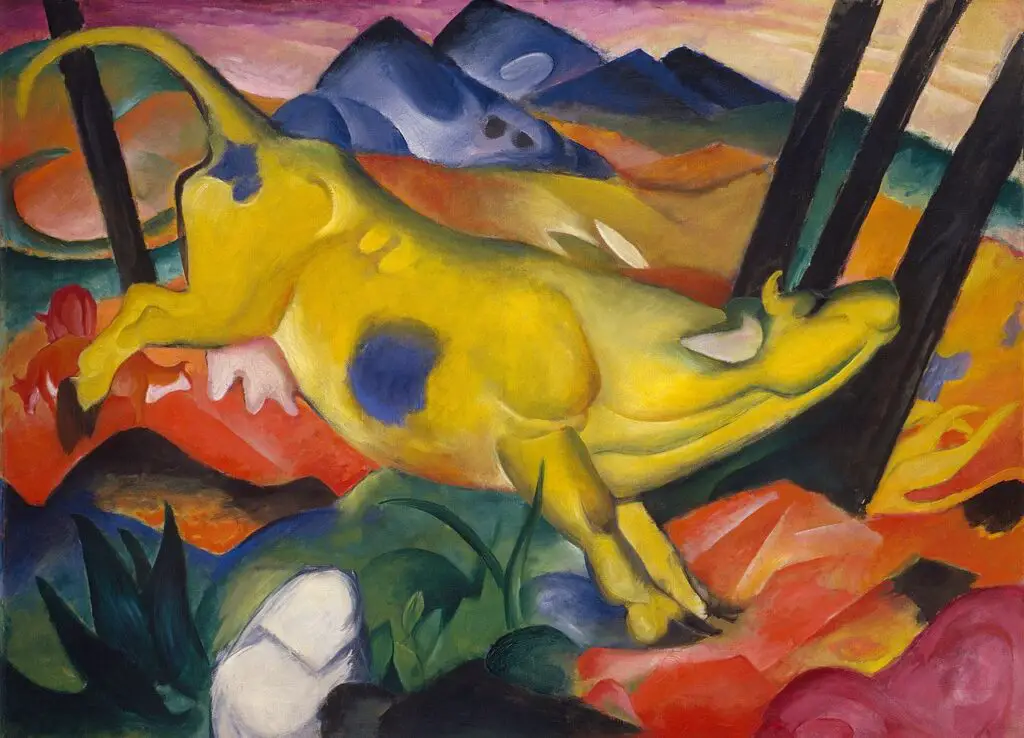
Franz Marc was a member of the Blaue Reiter group, another critical group associated with German Expressionism. “The Yellow Cow” is significant because it represents Marc’s interest in art’s spiritual and mystical aspects.
Max Beckmann – “The Night” (1918-1919)

Max Beckmann was a highly skilled painter who used vivid colors and dramatic compositions. “The Night” is significant because it captures the disillusionment and despair prevalent during this period. What is interesting is the small bits of color he used on this to convey the message.
George Grosz – “Metropolis” (1917)

George Grosz was a highly political artist known for his biting social commentary. “Metropolis” is significant because it captures the city’s frenetic energy while highlighting the inequalities and injustices of modern urban life.
August Macke – “Lady in a Green Jacket” (1913)
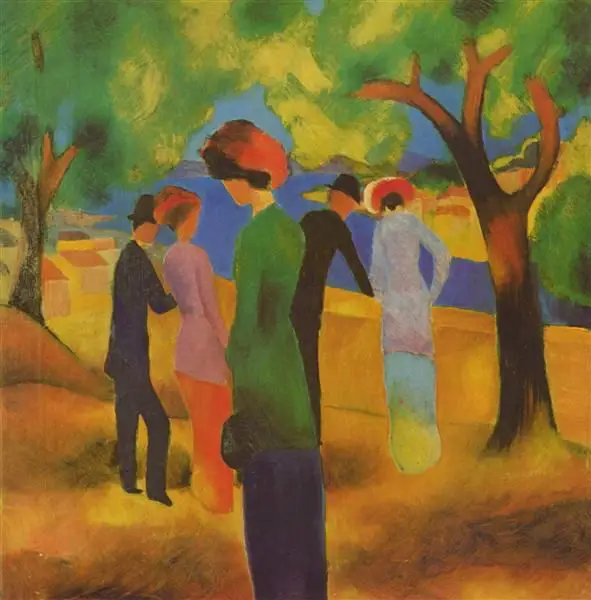
August Macke was known for using bright, vivid colors, and “Lady in a Green Jacket” is an excellent example. The painting combines bold greens, pinks, and blues to create a striking image.
Paula Modersohn-Becker – “Self-Portrait with Amber Necklace” (1906)
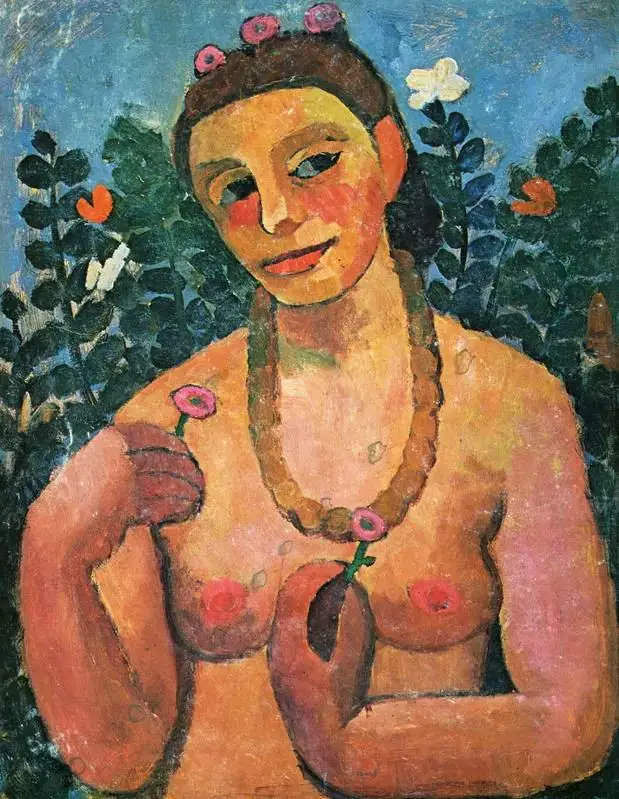
Paula Modersohn-Becker was a pioneering female artist associated with the Worpswede group, closely linked with German Expressionism. “Self-Portrait with Amber Necklace” is significant because it represents Modersohn-Becker’s interest in portraying the individual’s inner world.
Max Pechstein – “Dancers” (1910)
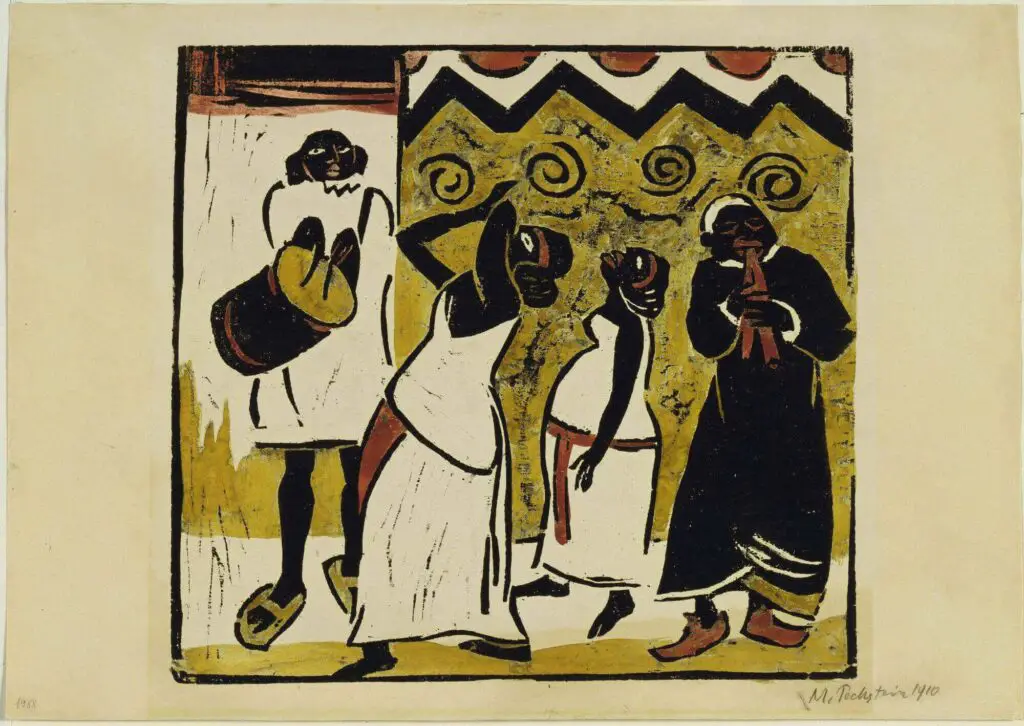
Max Pechstein was another member of the Die Brücke group. “Dancers” is significant because it captures the dance’s energy and vitality while featuring Pechstein’s bold use of color and form.
These works of art represent some of the most significant contributions to the German Expressionist movement. Each artist brought their unique style and approach to the movement, and together they helped create a new and exciting era of artistic expression.
German Expressionism was a bold and innovative movement that profoundly impacted art. It represented a break from traditional forms and marked a new era of experimentation and innovation.
The work of the top ten German Expressionist artists, including Kirchner, Kandinsky, Nolde, Marc, Beckmann, Grosz, Macke, Modersohn-Becker, Pechstein, and Schmidt-Rottluff, represents some of the most significant contributions to the movement. The impact of German Expressionism on modern art can be seen in the work of Abstract Expressionists.
German Expressionism was a transformative and vital art movement that helped to shape the course of art history.
Anita Louise Art is dedicated to art education, great artists, and inspiring others to find and create their art. We love art that uplifts and inspires. #ArtToMakeYouSmile! #ArtToMakeYouHappy!
If you want to see any of my art, you can find out more by clicking here. If you are interested in what inspires me and my paintings, you can discover more by clicking here.
We have a free newsletter and would love you to be part of our community; you can subscribe to the newsletter by clicking here. I would be happy to talk to you if you have any questions. You can reach me, Anita, by clicking here.
Subscribe to our Anita Louise Art YouTube Channel with great videos and information by clicking here.
Join us for our podcast “5 Minutes With Art.” Spend just 5 minutes a week with us to discover and learn about great art and artists. You can find out more about our podcast by clicking here.
Frequently Asked Questions About German Expressionism Art
What is German Expressionism Art?
German Expressionism Art is an art movement that emerged in Germany at the beginning of the 20th century. It was characterized by focusing on intense emotions and subjective feelings and rejecting traditional academic styles.
When did the German Expressionism Art movement begin?
The German Expressionism Art movement began in the early 1900s, around 1905.
What were the main characteristics of German Expressionism Art?
The main characteristics of German Expressionism Art were a focus on subjective emotions, distorted and exaggerated forms, bold colors, and a rejection of traditional academic styles.
What was the purpose of German Expressionism Art?
The purpose of German Expressionism Art was to express intense emotions and subjective feelings and to reject the traditional academic styles that dominated art at the time.
What influenced German Expressionism Art?
Various sources, including the works of Vincent van Gogh, the Fauvist movement, and various German and Austrian artists influenced German Expressionism Art.
What was the relationship between German Expressionism Art and politics?
German Expressionism Art was not explicitly political, but many artists involved in the movement were influenced by the social and political upheaval of the time, including the rise of industrialization and urbanization.
What were the main movements that came after German Expressionism Art?
The main movements after German Expressionism Art include the Bauhaus, Dadaism, and Surrealism.
What were the main exhibitions or events that helped to popularize German Expressionism Art?
The leading exhibitions that helped to popularize German Expressionism Art were the first and second Der Blaue Reiter exhibitions and the first and second exhibitions of Die Brücke.
Why is German Expressionism Art still relevant today?
German Expressionism Art is still relevant today because it represents a unique artistic approach focusing on subjective emotion and individual expression, influencing many subsequent art movements.
Related Questions
What Is The Cultural Significance Of Abstract Expressionism Art?
The cultural significance of abstract expressionism art is that it was a forerunner for the cultural changes in the United States in the 1950s and 1960s. The Abstract Expressionism movement started after World War II in the 1940s and continued into the 1950s. The world saw significant cultural shifts in the 1950s and the 1960s.
By clicking here, you can learn more by reading What The Cultural Significance Of Abstract Expressionism Art Is?.
What Is Abstract Expressionism?
Abstract Expressionism is a term applied to the art developed by American painters in the 1940s and 50s. It is associated with the New York School art movement, which signified a change in the world’s art center from Paris, France, to New York City. Gestural brushstrokes characterize the abstract expressionism art movement, mark markings, and the overall impression of spontaneity in the artwork.
You can learn more by reading the blog What Is Abstract Expressionism? by clicking here.
Why Is Van Gogh Considered Such a Great Artist?
Many things make Vincent Van Gogh unique and great as an artist. He had a great way of using color in his heart, but more than that, he was an artist who set and paved the way, and his brushstroke technique used color and his design ability. What is interesting is that he did this as a self-taught artist.
By clicking here, you can discover more by reading Why Is Van Gogh Considered Such a Great Artist?

